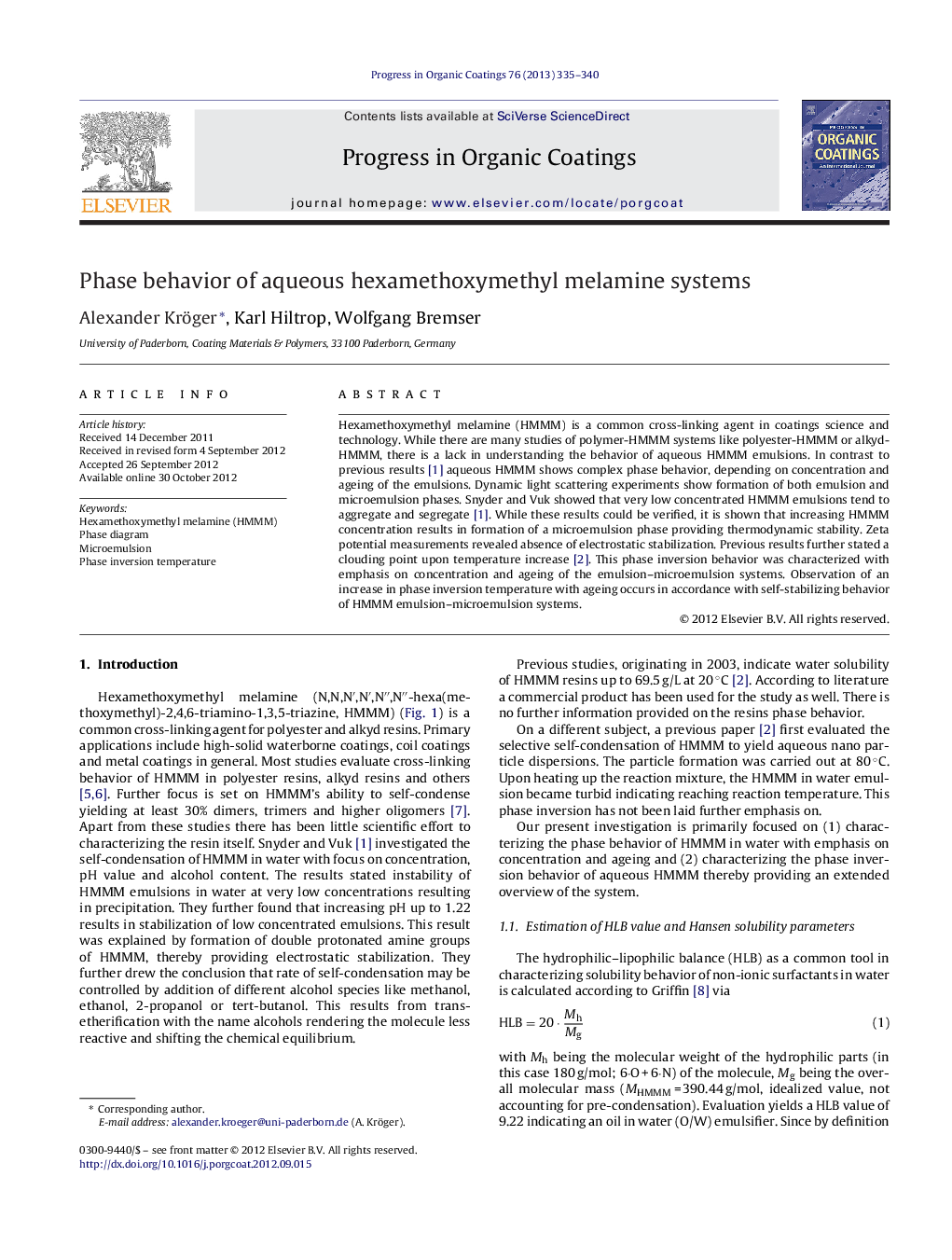| Article ID | Journal | Published Year | Pages | File Type |
|---|---|---|---|---|
| 693100 | Progress in Organic Coatings | 2013 | 6 Pages |
Hexamethoxymethyl melamine (HMMM) is a common cross-linking agent in coatings science and technology. While there are many studies of polymer-HMMM systems like polyester-HMMM or alkyd-HMMM, there is a lack in understanding the behavior of aqueous HMMM emulsions. In contrast to previous results [1] aqueous HMMM shows complex phase behavior, depending on concentration and ageing of the emulsions. Dynamic light scattering experiments show formation of both emulsion and microemulsion phases. Snyder and Vuk showed that very low concentrated HMMM emulsions tend to aggregate and segregate [1]. While these results could be verified, it is shown that increasing HMMM concentration results in formation of a microemulsion phase providing thermodynamic stability. Zeta potential measurements revealed absence of electrostatic stabilization. Previous results further stated a clouding point upon temperature increase [2]. This phase inversion behavior was characterized with emphasis on concentration and ageing of the emulsion–microemulsion systems. Observation of an increase in phase inversion temperature with ageing occurs in accordance with self-stabilizing behavior of HMMM emulsion–microemulsion systems.
Graphical abstractFigure optionsDownload full-size imageDownload as PowerPoint slideHighlights► Hexamethoxymethyl melamine (HMMM) phase behavior shows higher complexity than expected. ► HMMM shows both emulsion and microemulsion phases depending on concentration. ► HMMM microemulsion phase is established at concentrations above 25 g/L. ► HMMM microemulsion phase dominates at concentrations above 100 g/L. ► Aqueous HMMM systems show a lower critical solution temperature depending on ageing of the emulsion.
